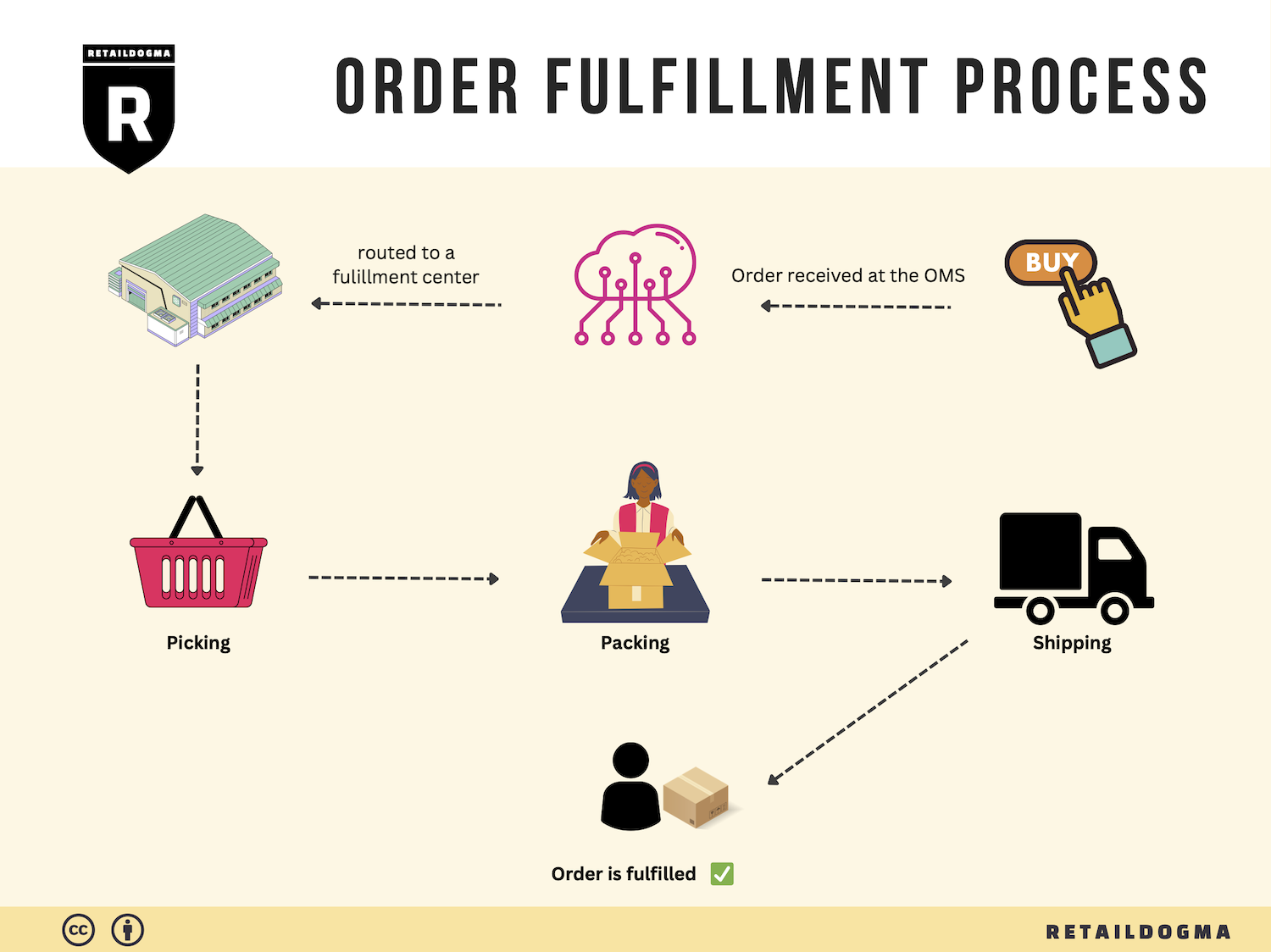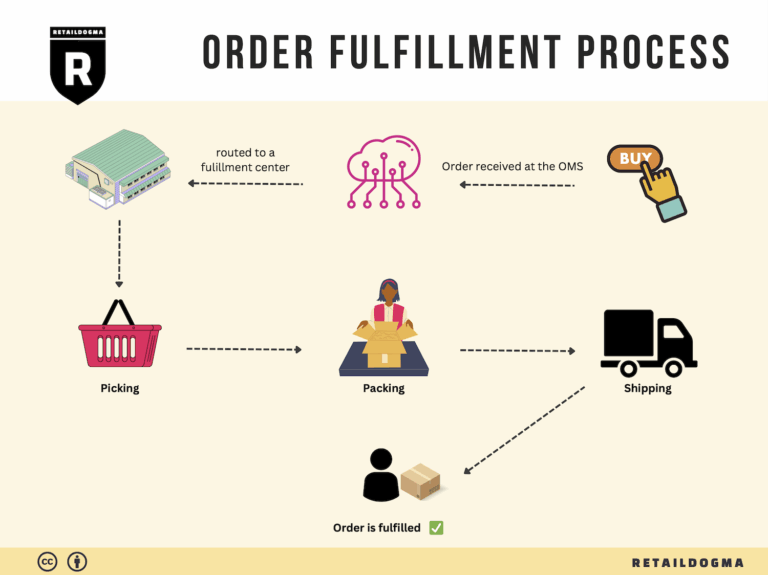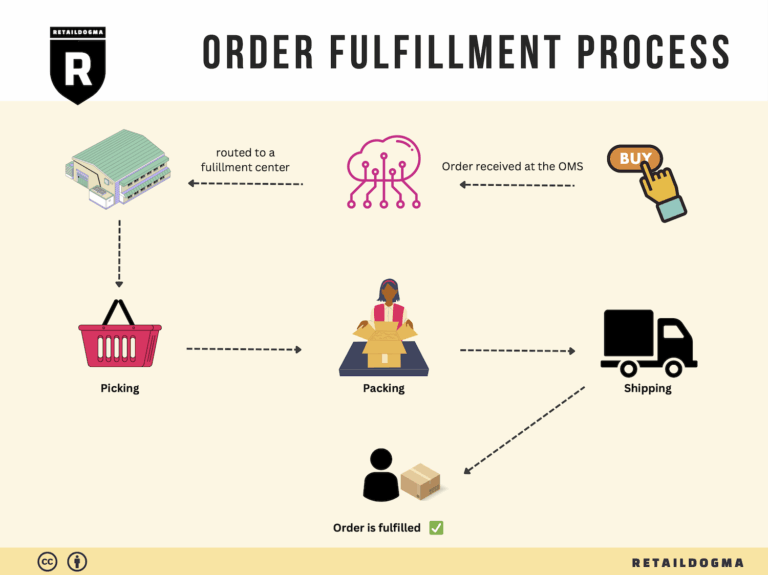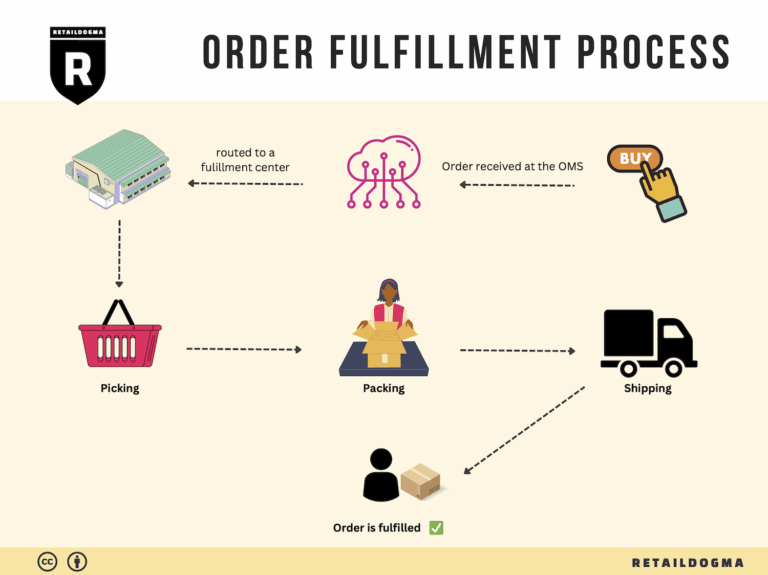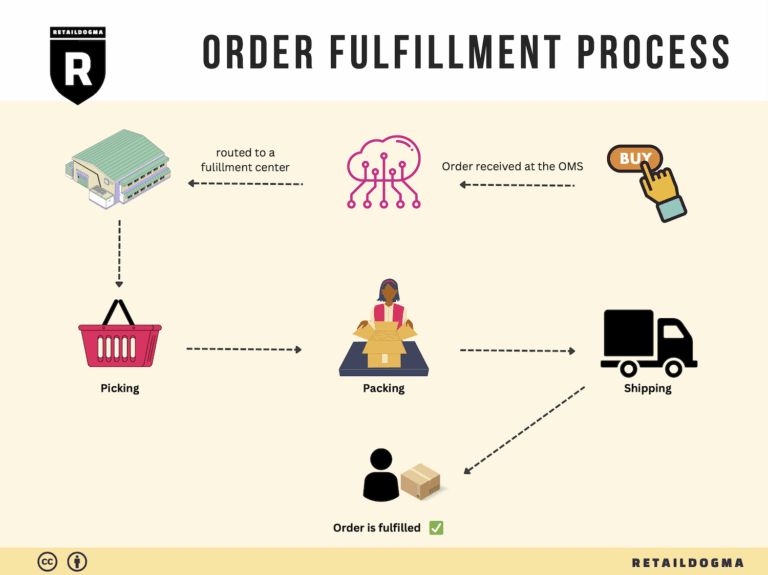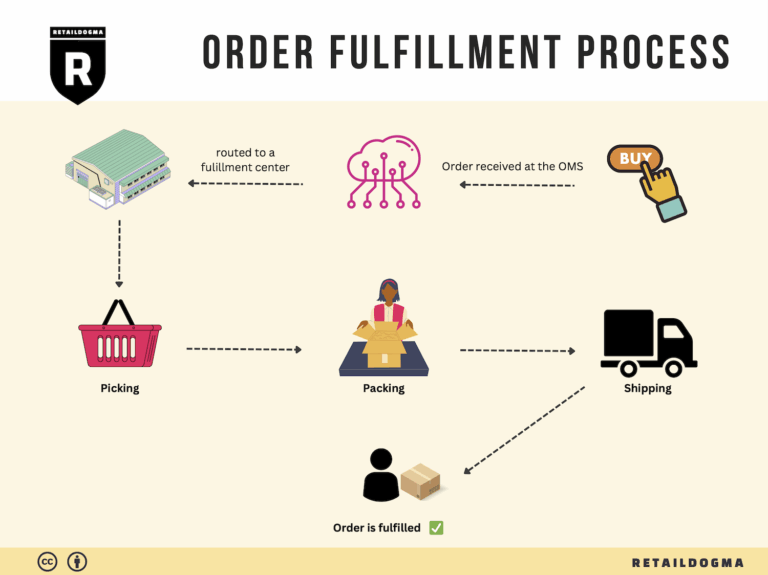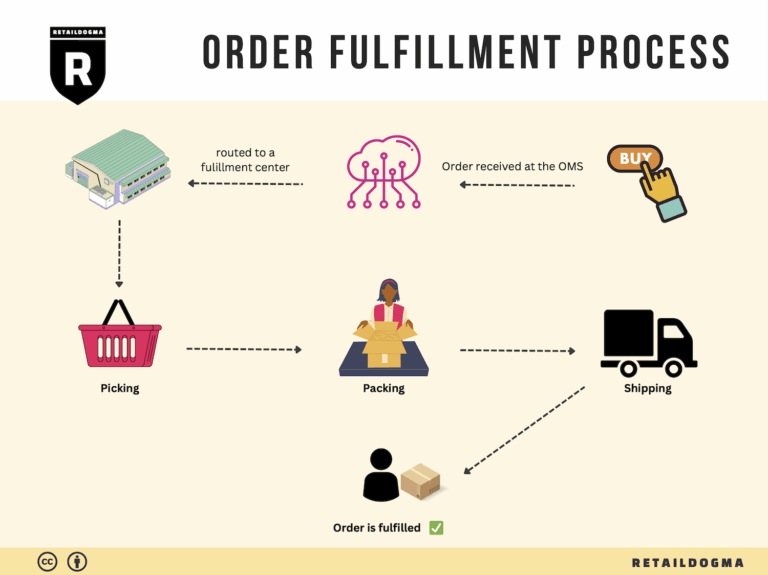What Is A Fulfillment Center? A Complete Guide (2025)
What is E-commerce Fulfillment? An Introduction for Growing Businesses
Understanding E-commerce Fulfillment: A Key to Growth
As e-commerce businesses scale, many owners and operations managers find themselves overwhelmed with the complexities of packing and shipping orders. The excitement of increased sales can quickly turn into stress when the logistics of fulfilling those orders become unmanageable. This is where understanding e-commerce fulfillment becomes crucial. Simply put, fulfillment is the process of getting a product from your inventory to your customer’s doorstep, and it encompasses everything from inventory management to shipping.
For growing businesses, mastering the fulfillment process can mean the difference between success and stagnation. This guide aims to demystify e-commerce fulfillment by exploring various models, core services, and strategies for selecting the right logistics partner.
Different Fulfillment Models
One of the first decisions a growing e-commerce business must make is which fulfillment model to adopt. Options include:
-
Third-Party Logistics (3PL): This model involves outsourcing your fulfillment operations to a specialized provider. 3PLs manage warehousing, packing, and shipping, allowing you to focus on your core business activities.
-
Fulfillment by Amazon (FBA): For those selling on Amazon, FBA provides a streamlined way to leverage Amazon’s vast logistics network. With FBA, Amazon handles storage, shipping, and customer service, but it comes with its own set of fees and requirements.
Understanding these models helps businesses align their logistics strategy with their growth objectives.
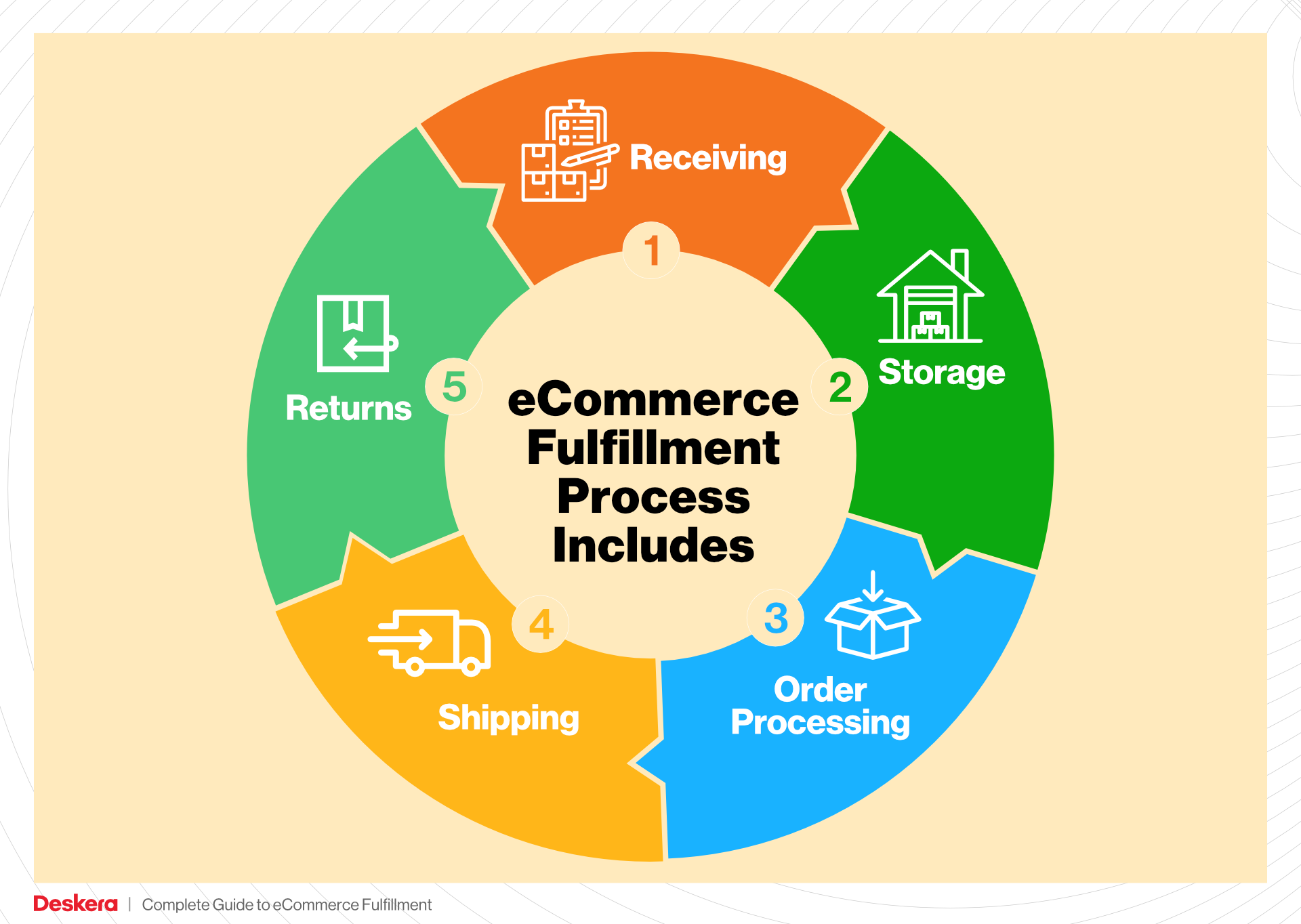
Core Fulfillment Services
Fulfillment isn’t just about shipping; it includes a range of services essential for efficient operations. Key services often include:
- Inventory management
- Order processing
- Packaging and labeling
- Shipping and tracking
- Returns management
Each service plays a critical role in ensuring that customers receive their orders accurately and on time, which is paramount for customer satisfaction.
Choosing the Right Partner and Pricing
Selecting the right fulfillment partner is a pivotal decision that affects your business’s operational efficiency and customer experience. Factors to consider include the partner’s capabilities, technology integration, customer service, and pricing structure. Understanding how different providers charge—whether through flat fees, per-order charges, or additional costs for services—will allow you to budget effectively.
Goal of This Guide
The goal of this guide is to empower e-commerce businesses to make informed decisions about their logistics. By providing insights into fulfillment models, core services, and partner selection, we aim to help you streamline your operations, reduce costs, and ultimately enhance customer satisfaction. As you navigate the complexities of e-commerce fulfillment, the right knowledge and strategy can pave the way for your business’s continued growth and success.
What You’ll Learn In This Guide
- What is E-commerce Fulfillment? An Introduction for Growing Businesses
- The Order Fulfillment Process: From ‘Buy’ Button to Customer’s Door
- Comparing Fulfillment Models: In-House vs. 3PL vs. Dropshipping
- A Deep Dive into Amazon FBA: Pros, Cons, and Who It’s For
- Core Services Offered by Fulfillment Centers
- How to Choose a Fulfillment Partner: A 6-Point Checklist
- Understanding Fulfillment Pricing: A Breakdown of Common Fees
- Frequently Asked Questions (FAQs) about Fulfillment
- Conclusion: Is Outsourcing Fulfillment the Right Move for Your Business?
- Important Disclaimer
The Order Fulfillment Process: From ‘Buy’ Button to Customer’s Door
1. Receiving Inventory
The order fulfillment process begins with receiving inventory into your warehouse. When new products arrive, they are checked against the purchase order to ensure accuracy and quality. This step is crucial as it lays the groundwork for the entire fulfillment operation. Any discrepancies or damaged items must be addressed immediately to maintain inventory integrity.
A key term associated with this step is SKU (Stock Keeping Unit). Each product is assigned a unique SKU, which helps in tracking inventory levels and managing stock efficiently. This systematic approach not only streamlines the receiving process but also prevents future complications in order fulfillment. Ensuring that products are correctly logged into the inventory management system allows businesses to maintain accurate stock levels, which is essential for meeting customer demand.
2. Warehouse Storage
Once inventory is received and verified, the next step is warehouse storage. Products are organized in a systematic manner, often categorized by SKU, size, or type. Effective storage solutions are vital for optimizing space and facilitating quick access to products when orders come in.
Proper warehouse storage is important for several reasons. It reduces the time required to locate items, thereby speeding up the picking process. A well-organized warehouse can also minimize handling damage and improve overall operational efficiency. Utilizing bin locations or racking systems can significantly enhance inventory management, making it easier to track stock levels and optimize storage space.
3. Order Picking
When a customer places an order, the fulfillment process moves into the picking stage. This involves selecting the correct items from the warehouse to fulfill the order. Efficiency in this step is crucial, as any errors can lead to customer dissatisfaction and increased operational costs.
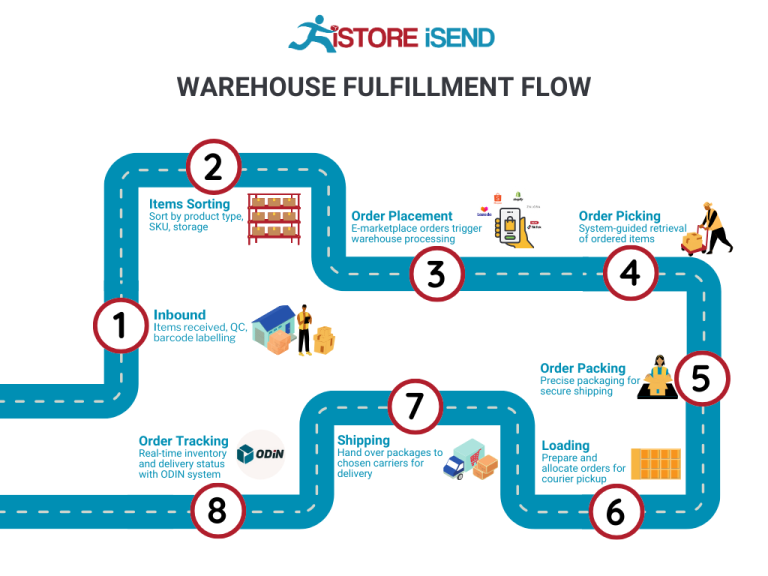
During order picking, pick lists are generated, which detail the items and quantities needed for each order. This list serves as a guide for warehouse associates to quickly and accurately gather products. Implementing technology such as RFID (Radio Frequency Identification) or barcode scanning can significantly improve accuracy and speed in the picking process. The goal here is to ensure that the right products are picked in the shortest amount of time, reducing lead times and improving customer satisfaction.
4. Order Packing
After the items are picked, they move to the packing stage. This step involves securely packaging the items to protect them during transit. Proper packing is essential not only for safeguarding the products but also for presenting a professional image to customers.
During the packing process, businesses often utilize pack lists, which confirm that all items for an order are included. Additionally, using the right materials—such as bubble wrap, packing peanuts, and sturdy boxes—helps prevent damage during shipping. Efficient packing can also minimize shipping costs by optimizing box sizes and reducing excess weight. This stage is critical as it directly impacts the customer’s experience; a well-packed order reflects a commitment to quality and care.
5. Shipping & Delivery
The final step in the order fulfillment process is shipping and delivery. Once orders are packed, they are labeled and dispatched to the chosen carriers for delivery. This step is critical, as it directly influences delivery speed and customer satisfaction.
Efficient shipping strategies include utilizing shipping software that can compare rates from various carriers to choose the most cost-effective option. Tracking numbers are generated and provided to customers, allowing them to monitor their order’s journey. Timely delivery not only fulfills customer expectations but can also lead to repeat business and positive reviews. Understanding the logistics involved in shipping and delivery is essential for scaling an e-commerce business, as it can directly affect operational costs and customer loyalty.
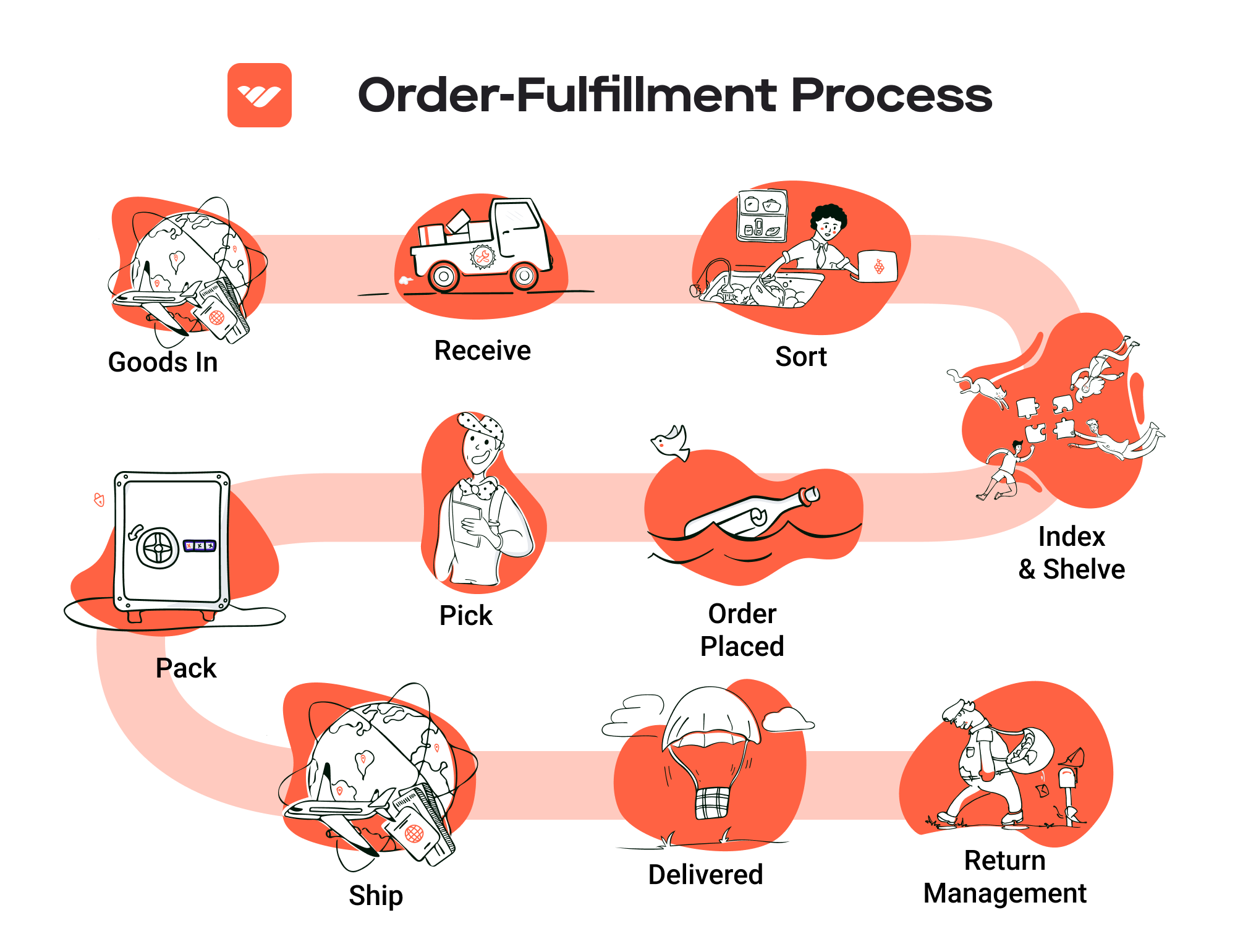
In summary, mastering the order fulfillment process is essential for any e-commerce business aiming to scale efficiently. Each step—from receiving inventory to final delivery—plays a significant role in ensuring customer satisfaction and operational success. By focusing on efficiency, accuracy, and quality at every stage, businesses can create a streamlined fulfillment system that meets growing demands.
Comparing Fulfillment Models: In-House vs. 3PL vs. Dropshipping
Fulfillment Model Comparison
| Model | Who Handles Inventory | Best For (Business Stage) | Key Advantage | Key Disadvantage |
|---|---|---|---|---|
| In-House Fulfillment | Business itself | Established businesses | Greater control over inventory and operations | High overhead costs and resource-intensive |
| Third-Party Logistics (3PL) | Third-party provider | Growing businesses | Scalable and flexible solutions | Less control over inventory and fulfillment speed |
| Dropshipping | Supplier/Manufacturer | Startups and small businesses | Low upfront investment and minimal risk | Lower profit margins and potential quality issues |
In-House Fulfillment
In-house fulfillment is a model where businesses manage their own inventory, warehousing, and shipping processes. This method is often employed by established companies that have the resources and infrastructure to handle logistics internally. One of the key advantages of in-house fulfillment is the level of control it provides. Businesses can oversee every aspect of their operations, from inventory management to packaging and shipping. This control allows for tailored customer experiences, as companies can implement specific processes that align with their brand values and customer expectations.
However, the in-house model comes with significant disadvantages. The most prominent drawback is the high overhead costs associated with maintaining warehouse space, staffing, and technology. Additionally, managing fulfillment in-house can be resource-intensive, requiring dedicated personnel and systems to ensure efficiency and effectiveness. As businesses scale, these costs can escalate quickly, making in-house fulfillment less viable for smaller or rapidly growing companies.
Third-Party Logistics (3PL)
Third-party logistics (3PL) providers offer businesses a way to outsource their fulfillment operations to specialized companies. These providers manage warehousing, inventory management, and shipping, allowing businesses to focus on their core competencies such as marketing and product development. 3PLs are particularly beneficial for growing businesses that need scalable solutions. As demand fluctuates, businesses can easily adjust their logistics needs without the burden of managing physical space or hiring additional staff.
The flexibility and scalability of 3PL are significant advantages; however, there are notable drawbacks. One major concern is the loss of control over inventory and fulfillment processes. When relying on a 3PL, businesses may face challenges in communication and coordination, which can lead to delays and fulfillment errors. Additionally, depending on the provider, there may be less transparency regarding inventory levels, which can hinder effective management and planning. Businesses must carefully select a reliable 3PL partner to mitigate these risks.
Dropshipping
Dropshipping is a fulfillment model where businesses do not hold inventory themselves. Instead, when a product is sold, the order is sent directly to the supplier or manufacturer, who then ships the product to the customer. This model is particularly appealing for startups and small businesses because it requires minimal upfront investment and significantly lowers financial risk. Entrepreneurs can test various products without the burden of inventory costs, making it easier to pivot or adapt their offerings based on market demand.
Despite its advantages, dropshipping has key disadvantages that can impact profitability and customer satisfaction. Typically, dropshipping yields lower profit margins, as suppliers often charge higher prices to cover their own costs. Additionally, businesses relinquish a degree of control over the fulfillment process, which can lead to potential quality issues, shipping delays, and customer service challenges. Relying on third-party suppliers means that businesses must invest in building strong relationships with reliable partners to maintain quality and service standards.
Conclusion
Choosing the right fulfillment model is crucial for the success and scalability of an e-commerce business. In-house fulfillment provides control and personalization but at a high cost. Third-party logistics offer flexibility and scalability, making them suitable for growing businesses, but come with risks regarding control and transparency. Dropshipping presents a low-risk entry point for startups, but can compromise profit margins and customer satisfaction. Ultimately, the best fulfillment model depends on the specific needs, resources, and goals of the business, and careful consideration of each model’s advantages and disadvantages is essential for informed decision-making.
A Deep Dive into Amazon FBA: Pros, Cons, and Who It’s For
Understanding Fulfillment by Amazon (FBA)
Fulfillment by Amazon (FBA) is a service offered by Amazon that allows sellers to store their products in Amazon’s fulfillment centers. Amazon then takes care of storage, packaging, and shipping of the products directly to customers. This service is designed to streamline the logistics process for e-commerce sellers, enabling them to focus more on product development, marketing, and customer engagement.
How FBA Works
-
Set Up Your FBA Account: Sellers must first create an Amazon seller account and opt into the FBA program. This involves agreeing to the terms and setting up shipping options.
-
Prepare Your Products: Sellers are responsible for preparing their products according to Amazon’s guidelines. This may include labeling items and ensuring they are packed securely.
-
Ship Inventory to Amazon: Once prepared, products are shipped to Amazon’s fulfillment centers. Amazon provides specific shipping plans and addresses for sellers to send their inventory.
-
Storage: Amazon stores the seller’s products in its warehouses. The inventory is monitored and managed by Amazon, which helps streamline operations.
-
Order Fulfillment: When a customer places an order for a product, Amazon picks, packs, and ships the product on behalf of the seller. This includes handling returns and customer service inquiries.
-
Payment and Fees: After the sale, sellers receive payment from Amazon, minus applicable fees for the FBA service, which include storage and fulfillment fees.
Pros of FBA
Prime Eligibility
One of the most significant advantages of using FBA is that products become eligible for Amazon Prime. This means that items can be shipped with free two-day delivery to Prime members, significantly increasing the visibility and attractiveness of products to potential buyers.
Customer Trust
Products fulfilled by Amazon benefit from Amazon’s trusted brand reputation. Customers are more likely to purchase items that are labeled as fulfilled by Amazon due to the assurance of reliable shipping, customer service, and return policies.
Multi-Channel Fulfillment
FBA supports multi-channel fulfillment, allowing sellers to utilize Amazon’s logistics network for orders placed on their own websites or other marketplaces. This feature provides flexibility and efficiency in managing inventory across various sales platforms.
Streamlined Logistics
With FBA, sellers can offload the complexities of warehousing, packing, and shipping. Amazon’s extensive infrastructure allows for efficient order processing, which can lead to faster delivery times and improved customer satisfaction.
Access to Amazon’s Tools and Resources
Sellers using FBA can access various tools and resources offered by Amazon, including analytics, advertising options, and inventory management systems, which can help optimize sales performance.
Cons of FBA
High Fees
While FBA provides numerous benefits, it also comes with costs that can accumulate quickly. Sellers must pay for storage fees (based on the amount of space their inventory occupies) and fulfillment fees (charged per item sold). These fees can significantly eat into profit margins, especially for low-cost items.
Strict Inventory Rules
Amazon has strict inventory management policies, including guidelines on how to label and prepare items. Sellers must adhere to these rules to avoid penalties, which can be a hassle for those unfamiliar with the requirements.
Commingling Risks
FBA products may be commingled, meaning that inventory from multiple sellers is stored together. This can pose risks if a customer receives a product that is not from the original seller, potentially leading to negative feedback or returns. Sellers have less control over their inventory in this scenario.
Limited Control over Shipping
Once products are in Amazon’s fulfillment centers, sellers have limited control over the shipping process. This can be problematic if there are delays or issues, as sellers rely entirely on Amazon to fulfill orders.
Inventory Storage Limitations
Amazon imposes restrictions on how much inventory sellers can store, particularly during peak seasons. This can limit a seller’s ability to stock up on inventory and meet demand, which may result in lost sales opportunities.
Who is FBA Best For?
Fulfillment by Amazon is particularly beneficial for small to medium-sized e-commerce businesses looking to scale operations without the overhead costs associated with managing their own fulfillment centers. It is ideal for:
- New Sellers: Those just starting in the e-commerce space can leverage Amazon’s infrastructure and customer base without needing to invest heavily in logistics.
- High-Volume Sellers: Businesses that experience high sales volumes can benefit from Amazon’s ability to handle large quantities of orders efficiently.
- Brands Seeking Exposure: Sellers looking to enhance their brand visibility can take advantage of FBA’s Prime eligibility and Amazon’s trusted platform.
- Sellers with Diverse Product Lines: Those with multiple products can manage inventory across various sales channels seamlessly.
In conclusion, while FBA offers numerous advantages that can facilitate business growth and enhance customer satisfaction, sellers must carefully consider the associated costs and rules. By weighing the pros and cons, businesses can make informed decisions about whether FBA aligns with their operational goals and customer service standards.
Core Services Offered by Fulfillment Centers
Inventory Management & Warehousing
Fulfillment centers provide comprehensive inventory management and warehousing services that are crucial for e-commerce businesses aiming to scale efficiently. This service involves the systematic storage, tracking, and management of products in a secure environment. Fulfillment centers utilize sophisticated inventory management systems that allow businesses to maintain real-time visibility of their stock levels, enabling them to make informed purchasing decisions and avoid stockouts or overstock situations.
Benefits:
-
Optimized Space Utilization: Fulfillment centers are designed to maximize storage capacity, ensuring that businesses can store a larger quantity of products without the need for costly warehouse space.
-
Real-Time Inventory Tracking: Automated inventory management systems provide businesses with up-to-the-minute data on stock levels, which helps in forecasting demand and managing supply effectively.
-
Scalability: As an e-commerce business grows, fulfillment centers can easily adjust the storage space and services provided, allowing for seamless scaling without significant capital investment in new facilities.
-
Reduced Operational Costs: By outsourcing warehousing needs, businesses can lower overhead costs associated with maintaining their own storage facilities and staff.
Pick and Pack Services
Pick and pack services are essential for the efficient fulfillment of customer orders. This process involves selecting the ordered items from the warehouse shelves (picking) and preparing them for shipment (packing). Fulfillment centers employ streamlined processes and advanced technology to ensure that orders are accurately picked and packed in a timely manner.
Benefits:
-
Increased Accuracy: Fulfillment centers utilize barcode scanning and inventory management software to minimize picking errors, ensuring that customers receive the correct products.
-
Faster Order Fulfillment: With established workflows and trained staff, fulfillment centers can process orders more quickly than most in-house operations, leading to faster shipping times and improved customer satisfaction.
-
Customizable Packaging Options: Many fulfillment centers offer various packing solutions, including branded packaging and gift wrapping, which can enhance the customer experience and promote brand loyalty.
-
Cost Efficiency: By leveraging economies of scale, fulfillment centers can offer competitive pricing on shipping materials and services, which can result in lower overall fulfillment costs for e-commerce businesses.
Kitting and Assembly
Kitting and assembly services involve the pre-assembly of products or the grouping of items into kits before they are shipped to customers. This is particularly beneficial for businesses that sell complex products or bundles, as it allows for more efficient packaging and shipping.
Benefits:
-
Streamlined Operations: By outsourcing kitting and assembly, e-commerce businesses can reduce the time and labor required for these processes, allowing them to focus on core business activities like marketing and sales.
-
Enhanced Product Presentation: Professionally assembled kits can improve the perceived value of products, making them more appealing to customers and potentially increasing sales.
-
Improved Order Accuracy: With fulfillment centers handling the assembly process, the risk of errors is reduced, ensuring that customers receive complete and correctly assembled products.
-
Flexibility and Customization: Fulfillment centers can accommodate special requests for kitting, such as seasonal promotions or unique customer orders, providing businesses with the flexibility to meet diverse customer needs.
Returns Management (Reverse Logistics)
Returns management, or reverse logistics, is a critical service offered by fulfillment centers that deals with the process of handling product returns from customers. This includes receiving returned items, inspecting them, restocking them if they are in sellable condition, and managing the disposition of unsellable items.
Benefits:
-
Efficient Returns Processing: Fulfillment centers have established processes for managing returns, which can significantly reduce the time it takes to process returns and issue refunds or exchanges.
-
Improved Customer Satisfaction: A smooth and efficient return process enhances the overall customer experience, fostering trust and encouraging repeat business.
-
Data Insights: Fulfillment centers can provide valuable data on return reasons, which can help e-commerce businesses identify product issues or areas for improvement in their offerings.
-
Cost Management: By outsourcing returns management, businesses can reduce the labor and overhead costs associated with handling returns in-house, allowing them to allocate resources to other areas of their operations.
In summary, fulfillment centers offer a range of core services that are essential for e-commerce businesses looking to streamline operations and scale effectively. By leveraging these services, businesses can enhance their operational efficiency, reduce costs, and improve customer satisfaction, all of which are vital for sustainable growth in the competitive e-commerce landscape.
How to Choose a Fulfillment Partner: A 6-Point Checklist
Location & Warehouse Network
Importance:
The geographical location of your fulfillment partner’s warehouses can significantly impact shipping times and costs. A strategically located partner can enhance your delivery capabilities, ensuring faster service to your customers.
Questions to Ask:
– Where are your fulfillment centers located, and how does that align with our customer base?
– What is your shipping range, and do you have plans to expand your network?
– How do you handle shipping to remote or less accessible areas?
Technology & Integrations
Importance:
An effective fulfillment partner should utilize advanced technology to streamline operations. This includes inventory management systems, order processing software, and integration capabilities with your existing e-commerce platforms. The right technology ensures real-time visibility and efficient management of your supply chain.
Questions to Ask:
– What type of technology do you use for inventory management and order fulfillment?
– Can your systems integrate with our existing e-commerce platforms (e.g., Shopify, Amazon)?
– How do you provide tracking information to both us and our customers?
Specializations (e.g., Cold Storage, Oversized Items)
Importance:
Different businesses have unique needs, such as handling perishable goods or oversized items. It’s crucial to partner with a fulfillment provider that has the necessary expertise and facilities to manage your specific product requirements.
Questions to Ask:
– Do you have specialized facilities for certain types of products, such as cold storage or handling fragile items?
– What experience do you have in fulfilling orders for businesses in our industry?
– How do you ensure compliance with industry regulations for specialized items?
Scalability & Capacity
Importance:
As your business grows, your fulfillment needs will evolve. A suitable partner should be able to scale operations in response to increased demand without compromising service quality.
Questions to Ask:
– How do you manage fluctuations in order volume, particularly during peak seasons?
– What is your current capacity, and how do you plan to accommodate future growth?
– Can you provide examples of how you’ve supported clients during periods of rapid growth?
Pricing and Contracts
Importance:
Understanding the cost structure and contractual obligations is vital to maintaining healthy margins. Transparent pricing and favorable contract terms can prevent unexpected costs and ensure a smooth partnership.
Questions to Ask:
– Can you provide a detailed breakdown of your pricing model (e.g., storage fees, shipping rates)?
– Are there any hidden fees we should be aware of (e.g., for returns or special handling)?
– What are the terms of the contract, and how flexible are they in accommodating changes in our business needs?
Customer Support & Reviews
Importance:
Reliable customer support can make a significant difference in resolving issues quickly and efficiently. Additionally, researching reviews and testimonials can provide insight into the partner’s reliability and quality of service.
Questions to Ask:
– What customer support channels do you offer (e.g., phone, email, chat)?
– How quickly can we expect a response to inquiries or issues?
– Can you provide references or case studies from other clients in our industry?
Conclusion
Choosing the right fulfillment partner is a crucial decision that can influence your e-commerce business’s success. By evaluating potential partners against these six key criteria—Location & Warehouse Network, Technology & Integrations, Specializations, Scalability & Capacity, Pricing and Contracts, and Customer Support & Reviews—you can make a well-informed choice that aligns with your operational goals. Take the time to engage with potential partners, ask these essential questions, and consider their responses carefully. A strong fulfillment partner can help streamline your logistics, enhance customer satisfaction, and ultimately support your business growth.
Understanding Fulfillment Pricing: A Breakdown of Common Fees
Initial Setup Fees
Initial setup fees are typically charged when you first begin using a fulfillment service. This fee covers the cost of integrating your e-commerce platform with the fulfillment provider’s systems and may include account creation, software installation, and training. The setup process can vary significantly between providers, so it’s essential to clarify what is included in this fee.
To calculate initial setup fees, providers may charge a flat rate or base it on the complexity of your business needs. For instance, a straightforward integration with minimal customization might incur a lower fee compared to a more complex setup requiring additional features or support. Always request a detailed breakdown of what the setup fee entails, including any potential ongoing costs related to software maintenance or upgrades.
Receiving Fees
Receiving fees are charged for the intake of inventory into the fulfillment center. This fee is calculated based on the number of units received and can vary depending on the size and weight of the items. Some fulfillment centers might also charge additional fees for special handling of items that require extra care or specific processing instructions.
The cost is often structured as a per-unit rate, which means that the more items you send, the higher the total receiving fee. To avoid unexpected costs, ensure you understand the provider’s policies regarding how they handle different types of products, including bulk items, fragile goods, or those requiring special documentation.
Storage Fees (per pallet/bin)
Storage fees are charged based on the amount of space your inventory occupies within the fulfillment center. This fee is typically calculated on a monthly basis and is often expressed as a cost per pallet or bin.
For example, if your inventory takes up five pallets, and the storage fee is $20 per pallet, your monthly storage fee would be $100. It’s crucial to understand the dimensions and weight limits of the pallets or bins used by the fulfillment center, as exceeding these limits can lead to additional charges. Additionally, consider seasonal variations in your inventory levels, as storage fees can increase significantly during peak sales periods if you are not managing stock effectively.
Pick & Pack Fees (per item/order)
Pick and pack fees are charged for the labor involved in retrieving items from storage and preparing them for shipment. This fee is generally calculated on a per-item or per-order basis, depending on the fulfillment center’s pricing model.
For example, if a fulfillment provider charges $2 per item and your order contains three items, your pick and pack fee for that order would be $6. Some providers may offer tiered pricing, where the cost per item decreases as the order quantity increases. It’s important to inquire about these rates and understand how they apply to your typical order volume, as this can significantly impact your overall fulfillment costs.
Shipping Fees
Shipping fees cover the cost of transporting your products to customers. These fees can vary widely based on factors such as the shipping method (standard, expedited, etc.), the destination, the weight of the package, and the shipping carrier used.
Providers may offer different shipping options, and understanding the implications of each is critical for cost management. Some fulfillment centers negotiate shipping rates with carriers and pass those savings on to you, while others may charge a markup on standard carrier rates. When assessing shipping fees, consider not just the immediate costs but also the delivery times and customer satisfaction associated with various shipping methods.
Tips for Getting an Accurate Quote
To ensure you receive an accurate quote from a fulfillment provider, follow these steps:
-
Provide Detailed Information: Share specifics about your inventory, including dimensions, weights, and the types of products you sell. This information helps providers give you a more tailored estimate.
-
Understand Your Volume: Have an estimate of your expected order volume, as fulfillment costs can vary based on the number of items processed.
-
Ask for Transparency: Request a detailed breakdown of all fees associated with your fulfillment service. This should include setup, receiving, storage, pick and pack, and shipping fees.
-
Inquire About Additional Charges: Clarify any potential extra charges, such as for returns, special handling, or seasonal fluctuations in storage fees.
-
Compare Providers: Don’t settle for the first quote you receive. Compare multiple fulfillment centers to understand the market rates and services offered.
By taking these steps, you can make more informed decisions and select a fulfillment partner that aligns with your business needs and budget.
Frequently Asked Questions (FAQs) about Fulfillment
1. What is the role of Amazon fulfillment centers?
Amazon fulfillment centers are large warehouses where products are stored, packed, and shipped to customers. The primary role is to efficiently manage inventory and ensure quick delivery by processing orders rapidly, utilizing advanced technology and logistics systems.
2. How does Amazon ensure timely delivery?
Amazon utilizes a sophisticated network of fulfillment centers located strategically around the globe. By leveraging advanced algorithms, robotics, and a well-coordinated logistics network, Amazon can optimize shipping routes and reduce delivery times, often offering same-day or next-day delivery options.
3. What is the difference between a warehouse and a fulfillment center?
A warehouse is primarily used for storage of goods, while a fulfillment center is designed for order processing and shipping. Fulfillment centers focus on the entire logistics process, including inventory management, packing, and shipping directly to consumers, whereas warehouses may not engage in these activities.
4. What is a Third-Party Logistics Provider (3PL)?
A Third-Party Logistics Provider (3PL) is a company that offers outsourced logistics services, including warehousing, fulfillment, and transportation. Businesses often partner with 3PLs to enhance their supply chain efficiency without managing the logistics infrastructure themselves.
5. How much do fulfillment services cost?
Fulfillment services costs can vary widely based on several factors, including the type of services required, order volume, storage space needed, and shipping methods. On average, businesses can expect to pay for storage fees, picking and packing fees, and shipping costs. It’s essential to obtain quotes from providers to understand the specific costs associated with your business needs.
6. What types of roles are available in Amazon fulfillment centers?
Amazon fulfillment centers offer a wide range of roles, from warehouse associates who pick and pack orders to management positions overseeing operations. Other roles include safety specialists, human resources personnel, and engineers working on technology improvements within the fulfillment process.
7. What are the benefits of working at Amazon fulfillment centers?
Working at Amazon fulfillment centers comes with several benefits, including competitive pay, health insurance, retirement plans, and opportunities for career advancement. Employees often have access to training programs and can pursue internal mobility to grow within the company.
8. How does Amazon ensure safety in its fulfillment centers?
Amazon prioritizes safety through rigorous training programs, safety protocols, and continuous monitoring of working conditions. The company implements technology and processes to minimize workplace hazards and regularly conducts safety drills and assessments to ensure compliance with health and safety standards.
9. Can small businesses use Amazon fulfillment services?
Yes, small businesses can utilize Amazon fulfillment services through the Fulfillment by Amazon (FBA) program. This allows sellers to store their products in Amazon’s fulfillment centers, where Amazon handles storage, packaging, and shipping, enabling small businesses to reach a broader audience without investing heavily in logistics.
10. What technology is used in Amazon fulfillment centers?
Amazon fulfillment centers employ advanced technologies, including robotics for picking and packing, automated sorting systems, and sophisticated inventory management software. These technologies enhance efficiency, accuracy, and speed in fulfilling orders, allowing Amazon to maintain its commitment to customer satisfaction.
Conclusion: Is Outsourcing Fulfillment the Right Move for Your Business?
The Case for Outsourcing Fulfillment
Outsourcing fulfillment can be a transformative decision for e-commerce businesses aiming for growth and efficiency. One of the most significant benefits is the time savings it offers. By entrusting fulfillment tasks to an experienced partner, business owners can focus on core activities such as marketing, product development, and customer engagement rather than getting bogged down in logistics. This shift not only enhances productivity but also allows for a more strategic allocation of resources.
Scalability is another crucial advantage of outsourcing. As your business grows, so do the complexities of inventory management, order processing, and shipping logistics. A reliable fulfillment partner can easily adapt to fluctuating demands, whether you’re experiencing seasonal spikes in orders or expanding your product range. This flexibility ensures that your customers receive timely deliveries without compromising service quality, thereby enhancing customer satisfaction and loyalty.
Moreover, leveraging the expertise of a fulfillment service can significantly improve operational efficiency. These providers often utilize advanced technologies and established best practices, which can lead to faster processing times and reduced shipping costs. Their specialized knowledge can help you navigate challenges such as international shipping regulations and return management, ultimately providing a smoother experience for both your business and your customers.
However, the success of outsourcing fulfillment hinges on choosing the right partner. It’s essential to conduct thorough research and select a provider that aligns with your business goals and values.
To determine if outsourcing fulfillment is the right next step for your business, consider conducting an audit of your current shipping processes. Analyze pain points, operational bottlenecks, and customer feedback. This evaluation will help you make an informed decision about whether a fulfillment partner can help you achieve your growth objectives. Embrace the opportunity to streamline your operations and enhance your customer experience—your future success may depend on it.
Important Disclaimer
⚠️ Important Disclaimer
The information in this guide is for educational purposes. Fulfillment services, pricing, and platform features change frequently. Always conduct your own due diligence and consult with providers directly before making business decisions.
